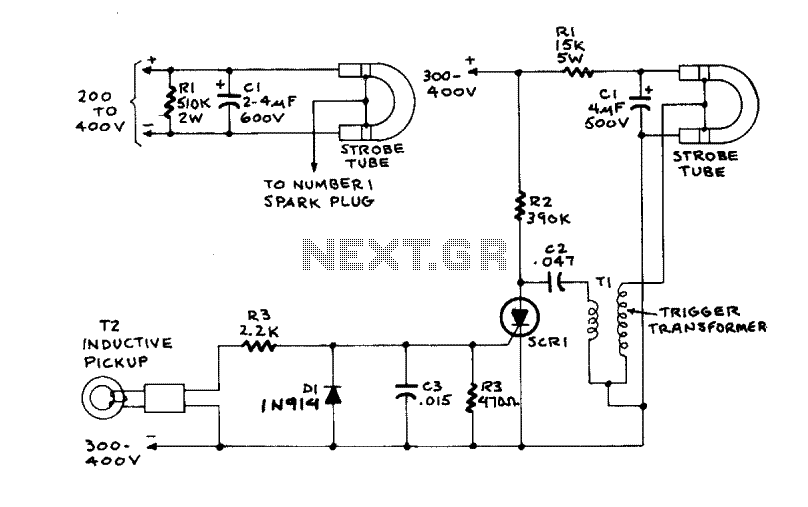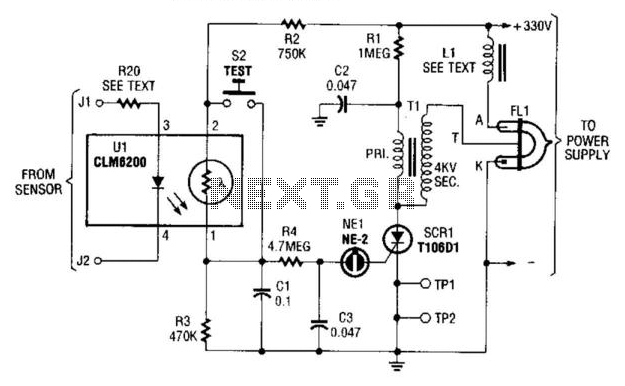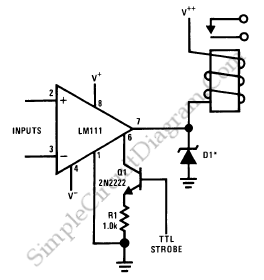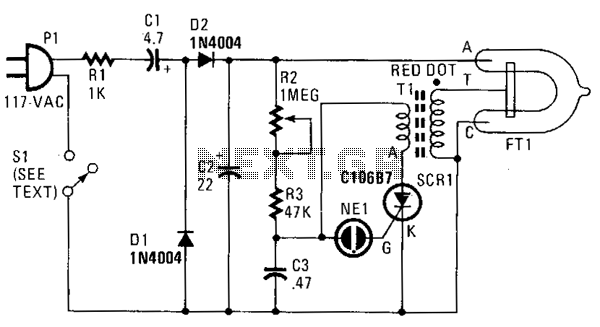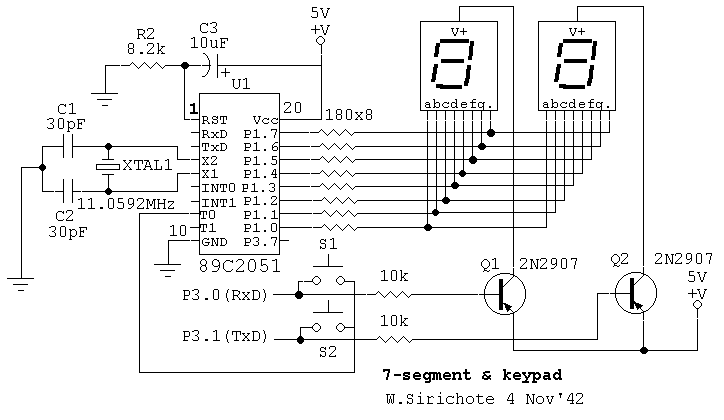
LX-800 Chaser & Strobe
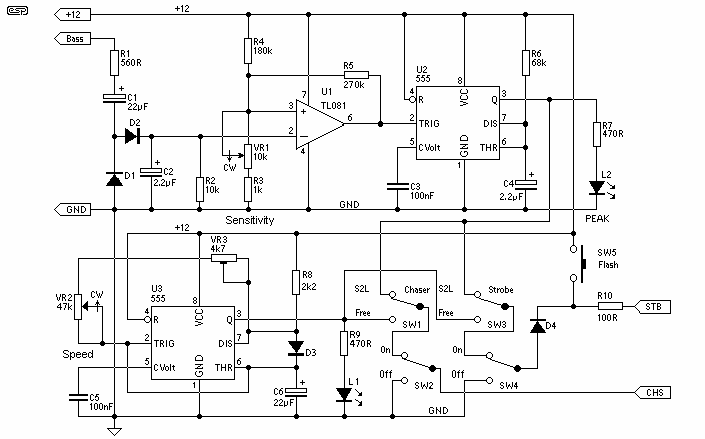
The strobe controller is essentially a stand-alone device, even though it is part of the console PCB. It connects through a two-wire cable to the remote strobe head. Control, input source selection and output routing are on the console. The input to the strobe controller and/or chaser is either through a bass-beat extractor circuit or a free-running oscillator, both of which are shared by the chaser and the strobe controller.
The strobe controller functions as an integral component in lighting systems, particularly in theatrical and entertainment applications. Its design allows for seamless integration with a console PCB, ensuring that it can be operated remotely via a two-wire cable linked to the strobe head. The two-wire connection facilitates both power and control signals, allowing the strobe head to activate in sync with the audio or visual cues dictated by the console.
The operational control of the strobe controller is centralized on the console, where users can select input sources and manage output routing effectively. This centralized control enhances usability, enabling operators to adjust settings in real-time during performances. The input options for the strobe controller are versatile, accommodating either a bass-beat extractor circuit or a free-running oscillator. The bass-beat extractor is particularly useful in synchronizing the strobe effect with the rhythm of the music, creating a dynamic visual experience that enhances the overall ambiance of the performance. Conversely, the free-running oscillator provides a continuous strobe effect, independent of external audio, which can be employed for various artistic effects.
The shared use of the input circuits between the chaser and the strobe controller allows for a compact design, reducing the complexity and potential points of failure in the system. This feature also fosters flexibility in design, enabling the integration of additional features or modifications without extensive redesign of the existing circuitry.
In summary, the strobe controller is a pivotal element in lighting design, offering both reliability and versatility in theatrical applications. Its ability to connect directly to a console PCB and operate with various input sources makes it a valuable tool for lighting designers and operators alike.The strobe controller is essentially a stand-alone device, even though it is part of the console PCB. It connects through a two-wire cable to the remote strobe head. Control, input source selection and output routing are on the console. The input to the strobe controller and/or chaser is either through a bass-beat extractor circuit or a free-running oscillator, both of which are shared by the chaser and the strobe controller.
The chaser was developed out of an urgent need by one of the directors of a show I was involved in. It was designed, de-bugged and constructed in a single evening - because the director wouldn`t take no for an answer (show me a theatrical director wh 🔗 External reference
The strobe controller functions as an integral component in lighting systems, particularly in theatrical and entertainment applications. Its design allows for seamless integration with a console PCB, ensuring that it can be operated remotely via a two-wire cable linked to the strobe head. The two-wire connection facilitates both power and control signals, allowing the strobe head to activate in sync with the audio or visual cues dictated by the console.
The operational control of the strobe controller is centralized on the console, where users can select input sources and manage output routing effectively. This centralized control enhances usability, enabling operators to adjust settings in real-time during performances. The input options for the strobe controller are versatile, accommodating either a bass-beat extractor circuit or a free-running oscillator. The bass-beat extractor is particularly useful in synchronizing the strobe effect with the rhythm of the music, creating a dynamic visual experience that enhances the overall ambiance of the performance. Conversely, the free-running oscillator provides a continuous strobe effect, independent of external audio, which can be employed for various artistic effects.
The shared use of the input circuits between the chaser and the strobe controller allows for a compact design, reducing the complexity and potential points of failure in the system. This feature also fosters flexibility in design, enabling the integration of additional features or modifications without extensive redesign of the existing circuitry.
In summary, the strobe controller is a pivotal element in lighting design, offering both reliability and versatility in theatrical applications. Its ability to connect directly to a console PCB and operate with various input sources makes it a valuable tool for lighting designers and operators alike.The strobe controller is essentially a stand-alone device, even though it is part of the console PCB. It connects through a two-wire cable to the remote strobe head. Control, input source selection and output routing are on the console. The input to the strobe controller and/or chaser is either through a bass-beat extractor circuit or a free-running oscillator, both of which are shared by the chaser and the strobe controller.
The chaser was developed out of an urgent need by one of the directors of a show I was involved in. It was designed, de-bugged and constructed in a single evening - because the director wouldn`t take no for an answer (show me a theatrical director wh 🔗 External reference
Warning: include(partials/cookie-banner.php): Failed to open stream: Permission denied in /var/www/html/nextgr/view-circuit.php on line 713
Warning: include(): Failed opening 'partials/cookie-banner.php' for inclusion (include_path='.:/usr/share/php') in /var/www/html/nextgr/view-circuit.php on line 713
